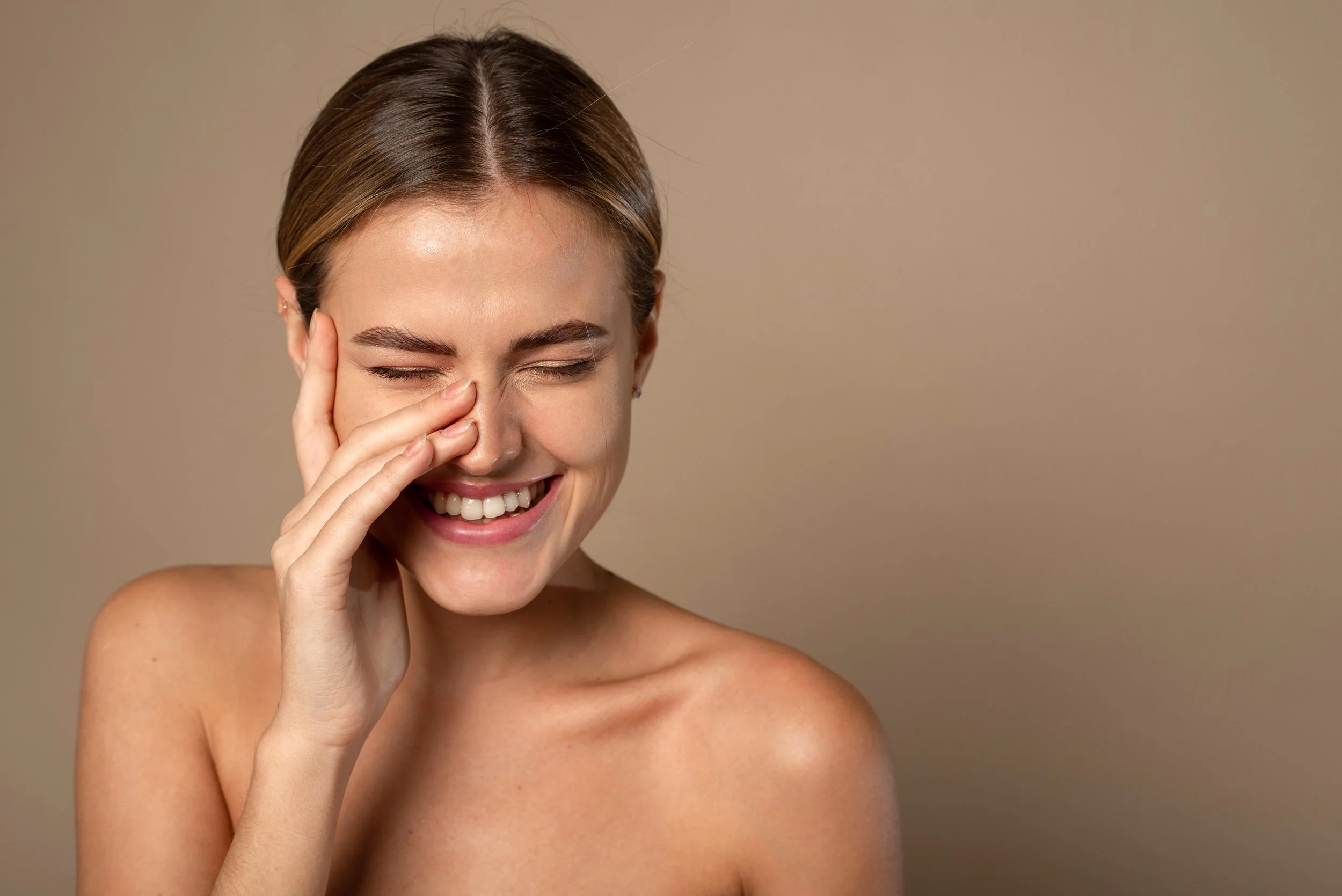Skin Care In Your 20’s
Taking care of your skin in your 20’s doesn’t have to be complicated. Getting into a good routine now will do wonders for your skin as you will be able to slow down the visible signs of ageing as you enter your 30’s. Trust me, your skin will thank you for it!
It’s no secret that as we age our skin begins to change. In our 20s, the skin is still plump, vibrant, and hydrated. It is something we take for granted but the obvious signs of ageing will become apparent when you enter your 30’s, so it’s important to get into a good routine early so you don’t have the difficult task of trying to reverse the damage and early signs of ageing.
Cleanse Daily
Double cleansing using a gentle cleanser morning and night is the best way to remove makeup, dirt and oil from your skin. Cleansing your skin well is essential for removing impurities that can cause breakouts and other skin issues. Avoid using hot water and harsh scrubs that can damage your skin's natural barrier.
Moisturise Regularly
Moisturising helps to keep your skin hydrated and healthy. Choose a moisturiser that is appropriate for your skin type, and make sure to apply it daily. You can apply moisturiser after cleansing or use a moisturiser that has SPF for added protection.
Protect Your Skin
Protecting your skin from the sun's harmful rays is essential to prevent premature aging, sunburn, and skin cancer. Use a broad-spectrum sunscreen with at least SPF 30 daily, even on cloudy days. Wear protective clothing like hats and sunglasses and seek shade during peak sun hours.
Exfoliate Weekly
Exfoliating your skin once a week helps to remove dead skin cells, unclog pores, and improve skin texture. Choose an exfoliator that is gentle on your skin and avoid over-exfoliating as it can cause irritation and sensitivity.
Get Enough Sleep
Getting enough sleep is vital for overall health and wellbeing, and it also affects your skin. Lack of sleep can lead to dark circles, puffy eyes, and dull skin. Aim for at least seven to eight hours of sleep per night to help your skin look its best.
Stay Hydrated
Drinking enough water is crucial for maintaining healthy skin. Dehydration can lead to dry, flaky, and dull skin. Aim for at least eight glasses of water per day to keep your skin hydrated and healthy.
Use Anti-Ageing Products
While your skin is still young and vibrant, it’s never too early to start using anti-aging products. Look for products that contain antioxidants, retinoids, and vitamin C to help prevent premature ageing and improve skin texture.
Skin Treatments To Consider
Have you heard of the term “collagen banking”? Basically it’s undergoing skin treatments now in order to boost your bodys store of collagen before your body starts to deplete them it in your 30’s. Treatments such as micro needling are fantastic for collagen banking and are a great way to keep a glowing, healthy complexion well into your older years.
I generally don’t recommend getting aesthetic treatments in your early 20’s unless visible static lines are beginning to form (which are the lines on your skin even when you’re not using the muscles.) Save your money and focus on good skin products and regular skin treatments instead!
Taking care of your skin in your 20’s doesn’t have to be complicated. Getting into a good routine now will do wonders for your skin as you will be able to slow down the visible signs of ageing as you enter your 30’s. Trust me, your skin will thank you for it!
The Importance of Wearing Sunscreen
The single most important addition to your skincare routine.
Anyone that has been in my treatment chair will know that I always ask about your skin routine. Getting aesthetic treatments is only one piece of the puzzle. The results you can achieve with these treatments will always be limited by the quality and appearance of your skin.
In this blog post, I will discuss why wearing SPF is so important, and how you can incorporate it into your daily routine.
First and foremost, it is essential to understand the role of the sun in causing damage to our skin. The sun emits harmful UV rays, which can penetrate our skin and cause DNA damage. This damage can lead to premature aging with the accelerated breakdown of collagen, the formation of wrinkles, and, in some cases, skin cancer. SPF, or Sun Protection Factor, works by creating a barrier on the skin that reflects or absorbs these harmful rays, preventing them from causing damage.
It's worth noting that it's not just direct exposure to the sun that can cause damage to our skin. Even on cloudy or overcast days, harmful UV rays can still penetrate the skin. UV rays can also penetrate through windows, including car windows. So even if you spend most of your day indoors, you should still be wearing sunscreen.
When it comes to choosing an SPF, in Australia it is recommended to wear sunscreen with an SPF of at least 30, ideally 50. This means that the sunscreen will block approximately 97-98% of UVB rays. Higher SPFs offer slightly more protection, but it's important to remember that no sunscreen can provide 100% protection.
So, how can you incorporate SPF into your daily routine? The easiest way is to use a moisturizer with SPF in the morning. This way, you're hydrating your skin while also protecting it from the sun. While many makeup products also contain SPF, it is important to note that this is usually only SPF15 which is insufficient coverage.
A common complaint I hear is that people don’t like the feel of sunscreen on their skin. Wearing a body sunscreen on your face isn’t recommended as it likely isn’t non-comedogenic (meaning it will clog up your pores!). Luckily there are a plethora of options available now that are made specifically for your face. You also don’t need to spend a fortune to make sure it works. I always encourage my patients to keep trying different brands until they find one that they like, which will make it easier to stick with.
Wearing SPF is crucial for protecting your skin. Incorporating sunscreen into your daily routine doesn't have to be complicated, but you do have to make it a habit. Rain, hail or shine, if you do nothing else for your skin, wear your sunscreen EVERY day. Your skin will thank you for it!



